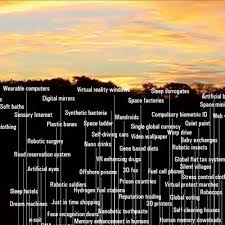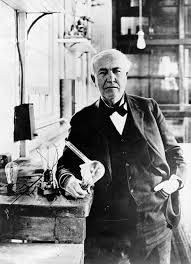
本周五將應實踐大學企業創業與創新管理研究所的蔡所長邀請,出席一場有關「開放式創新 Open Innovation」的研討會擔任與談人,因此我特別在這幾天仔細地觀察網路上是否有關於開放式創新的趨勢或著作。
其中,我非常喜愛的麥肯錫季刊(McKinsey Quarterly) 有篇名為
The Next Step In Open Innovation 的文章,本來滿懷希望,不過看來看去卻覺得該文可能是針對創新的入門者所寫,沒甚麼特別的新發現,因而有點失望。
不過在閱讀文章過程中,我挖出了 McKinsey Quarterly 之前訪問過 Pixar 公司Brad Birdy 這位曾經創作過玩具總動員、蟲蟲危機等膾炙人口的 3D 動畫電影的天王製作人,暢談 Pixar 公司的創新之路是怎麼走過來的,還有他是如何從 Steve Jobs 身上學到如何帶領團隊、激發創新的技巧,很值得對於研究「創新」有興趣的朋友們一讀 ! 看來我這禮拜五的研討會,應該也會有很多心得可以和現場朋友們分享了....
Lesson Two: Perfect is the Enemy of Innovation
The Quarterly: What sorts of things did you do differently?
Brad Bird: I had to shake the purist out of them—essentially frighten them into realizing I was ready to use quick and dirty “cheats” to get something on screen… I’d say, “Look, I don’t have to do the water through a computer simulation program… I’m perfectly content to film a splash in a swimming pool and just composite the water in.” I never did film the pool splash [but] talking this way helped everyone understand that we didn’t have to make something that would work from every angle. Not all shots are created equal. Certain shots need to be perfect, others need to be very good, and there are some that only need to be good enough to not break the spell.
Lesson Three: Look for Intensity
The Quarterly: Do angry people—malcontents, in your words—make for better innovation?
Brad Bird: Involved people make for better innovation… Involved people can be quiet, loud, or anything in-between—what they have in common is a restless, probing nature: “I want to get to the problem. There’s something I want to do.” If you had thermal glasses, you could see heat coming off them.
Lesson Four: Innovation Doesn’t happen in a Vacuum
The Quarterly: How do you build and lead a team?
Brad Bird: I got everybody in a room. This was different from what the previous guy had done; he had reviewed the work in private, generated notes, and sent them to the person… I said, “Look, this is a young team. As individual animators, we all have different strengths and weaknesses, but if we can interconnect all our strengths, we are collectively the greatest animator on earth. So I want you guys to speak up and drop your drawers. We’re going to look at your scenes in front of everybody. Everyone will get humiliated and encouraged together…
Lesson Five: High Morale Makes Creativity CheapThe Quarterly: It sounds like you spend a fair amount of time thinking about the morale of your teams.
Brad Bird: In my experience, the thing that has the most significant impact on a movie’s budget—but never shows up in a budget—is morale. [what’s true for a movie is true for a startup!] If you have low morale, for every $1 you spend, you get about 25 cents of value. If you have high morale, for every $1 you spend, you get about $3 of value. Companies should pay much more attention to morale.
Lesson Six: Dont Try To “Protect your success”The Quarterly: Engagement, morale—what else is critical for stimulating innovative thinking?
Brad Bird: The first step in achieving the impossible is believing that the impossible can be achieved. … “You don’t play it safe—you do something that scares you, that’s at the edge of your capabilities, where you might fail. That’s what gets you up in the morning.”
Lesson Six: Steve Jobs Says ‘Interaction = Innovation’The Quarterly: What does Pixar do to stimulate a creative culture?
Brad Bird: If you walk around downstairs in the animation area, you’ll see that it is unhinged. People are allowed to create whatever front to their office they want. One guy might build a front that’s like a Western town. Someone else might do something that looks like Hawaii…John [Lasseter] believes that if you have a loose, free kind of atmosphere, it helps creativity.
Then there’s our building. Steve Jobs basically designed this building. In the center, he created this big atrium area, which seems initially like a waste of space. The reason he did it was that everybody goes off and works in their individual areas. People who work on software code are here, people who animate are there, and people who do designs are over there. Steve put the mailboxes, the meetings rooms, the cafeteria, and, most insidiously and brilliantly, the bathrooms in the center—which initially drove us crazy—so that you run into everybody during the course of a day. [Jobs] realized that when people run into each other, when they make eye contact, things happen. So he made it impossible for you not to run into the rest of the company.
Lesson Seven: Encourage Inter-disciplinary LearningThe Quarterly: Is there anything else you’d highlight that contributes to creativity around here?
 之前我因教授一門「創新產業分析學分班」的課程,要求學員對於每個產業的發展歷程都要製作ㄧ個 Timeline (發展歷程表),才能對於該項產業的過去、現在、未來,擁有清晰的分析視野和預測未來的基準,因而對於各式各樣的 Timeline 都變得很有興趣研究與了解。
之前我因教授一門「創新產業分析學分班」的課程,要求學員對於每個產業的發展歷程都要製作ㄧ個 Timeline (發展歷程表),才能對於該項產業的過去、現在、未來,擁有清晰的分析視野和預測未來的基準,因而對於各式各樣的 Timeline 都變得很有興趣研究與了解。



